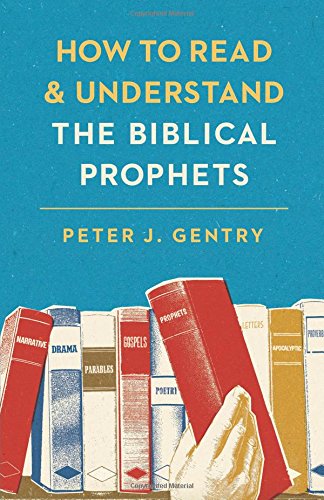A Brief Book Summary from Books At a Glance
by Kirsten Birkett
About the Author
Peter J. Gentry (PhD, University of Toronto) is professor of Old Testament interpretation at the Southern Baptist Theological Seminary and director of the Hexapla Institute. He is the co-author, with Stephen Wellum, of Kingdom through Covenant: A Biblical-Theological Understanding of the Covenants (Crossway, 2012).
Contents
Introduction
1 Calling the People Back to the Covenant
2 The End of the Covenant, Judgment, and Restoration
3 The Function of Repetition in Hebrew Literature
4 The Purpose of the Oracles concerning the Foreign Nations
5 Describing the Future, Part 1: Typology and the New Exodus
6 Describing the Future, Part 2: Apocalyptic Language
7 Describing the Future, Part 3: The Already and the Not Yet
Conclusion
General Summary
Responsible Bible reading strategies for the prophets, in the context of unfolding salvation and covenant.
Introduction
Many people who read the Bible do not have proper reading strategies, reading Gospels, narratives, and prophecy as they read Romans; then defend this by calling it literal interpretation. We read newspapers more intelligently. Prophecy is especially hard as the prophets use many genres to communicate. But there are principles that apply to all prophetic literature.
This book does not push any particular eschatology but helps believers to read the prophets.
Chapter 1 Calling the People Back to the Covenant
Everything in the prophets is based upon the covenant between God and Israel delivered in Deuteronomy. Israel constantly flagged in her loyalty to Yahweh. Consider how to read Isaiah 5-6 in this light:
Isaiah uses a recursive pattern in which a Hebrew author takes up the same topic repeatedly from different points of view. There is a central theme for Isaiah of corruption and social injustice resulting in divine judgement; it ends with a vision of a renewed Zion.
Is 1-2: Jerusalem’s idolatrous worldview leads to judgement, then God will restore.
Is 3-4: Jerusalem indicted for social injustice, then vision of future Zion and new exodus.
Is 5-12: Same themes in the context of military and political crisis in Judah.
In chapter 5 the message is given in the form of a parable, applied to Judah and Jerusalem, then the coming judgement is described. Key words are ‘woe’ and ‘therefore’: six woes leading to judgment. At the heart is the violation of social justice as indicated by the word pair justice-righteousness.
In Isaiah, the broken covenant will be restored by a future king who will rule in justice and righteousness: the promise of 16:5 is based on Deuteronomy 17. The king embodies Torah, summarised as justice-righteousness. Torah is instruction, not just “law,” and is given in the form of a covenant: it is instruction for living in this relationship of faithfulness, loyalty, love, trust, and obedience.
The violation of social justice is at the heart of all six woes in Isaiah 5. In particular, ownership of property has broken down due to the monarchy and urbanization, leaving landownership concentrated in the hands of the rich, which violated the social justice of the Torah. The people are called back to the covenant relationship and to start treating people more humanely. Otherwise, they face destruction.
This demonstrates that prophecy is mostly not about predicting the future – it is mostly about how God’s word applies to the present. The expectation of judgment for disloyalty comes from Deuteronomy. . . .
[To continue reading this summary, please see below....]The remainder of this article is premium content. Become a member to continue reading.
Already have an account? Sign In
